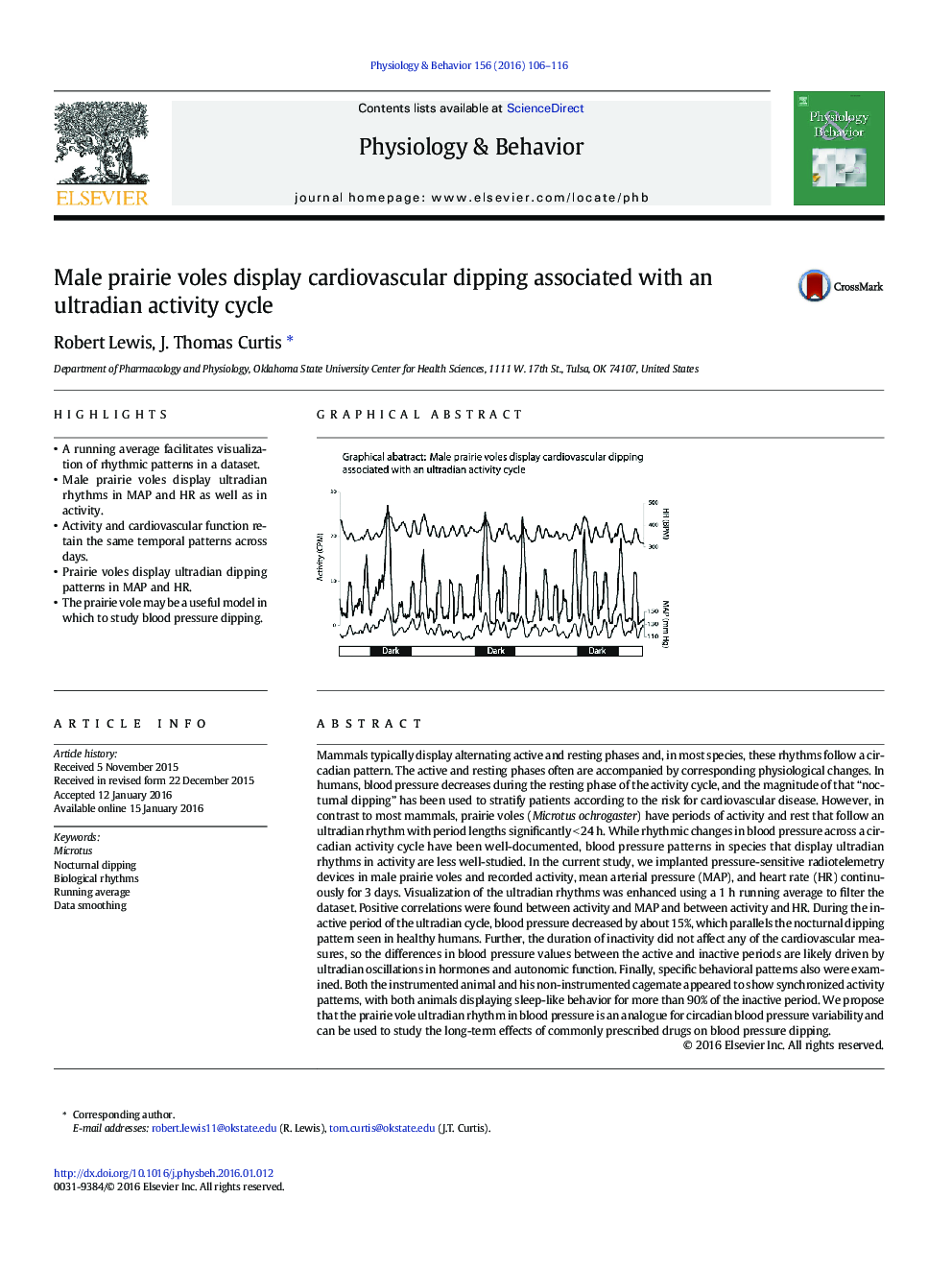| کد مقاله | کد نشریه | سال انتشار | مقاله انگلیسی | نسخه تمام متن |
|---|---|---|---|---|
| 5922990 | 1571162 | 2016 | 11 صفحه PDF | دانلود رایگان |
- A running average facilitates visualization of rhythmic patterns in a dataset.
- Male prairie voles display ultradian rhythms in MAP and HR as well as in activity.
- Activity and cardiovascular function retain the same temporal patterns across days.
- Prairie voles display ultradian dipping patterns in MAP and HR.
- The prairie vole may be a useful model in which to study blood pressure dipping.
Mammals typically display alternating active and resting phases and, in most species, these rhythms follow a circadian pattern. The active and resting phases often are accompanied by corresponding physiological changes. In humans, blood pressure decreases during the resting phase of the activity cycle, and the magnitude of that “nocturnal dipping” has been used to stratify patients according to the risk for cardiovascular disease. However, in contrast to most mammals, prairie voles (Microtus ochrogaster) have periods of activity and rest that follow an ultradian rhythm with period lengths significantly <Â 24Â h. While rhythmic changes in blood pressure across a circadian activity cycle have been well-documented, blood pressure patterns in species that display ultradian rhythms in activity are less well-studied. In the current study, we implanted pressure-sensitive radiotelemetry devices in male prairie voles and recorded activity, mean arterial pressure (MAP), and heart rate (HR) continuously for 3Â days. Visualization of the ultradian rhythms was enhanced using a 1Â h running average to filter the dataset. Positive correlations were found between activity and MAP and between activity and HR. During the inactive period of the ultradian cycle, blood pressure decreased by about 15%, which parallels the nocturnal dipping pattern seen in healthy humans. Further, the duration of inactivity did not affect any of the cardiovascular measures, so the differences in blood pressure values between the active and inactive periods are likely driven by ultradian oscillations in hormones and autonomic function. Finally, specific behavioral patterns also were examined. Both the instrumented animal and his non-instrumented cagemate appeared to show synchronized activity patterns, with both animals displaying sleep-like behavior for more than 90% of the inactive period. We propose that the prairie vole ultradian rhythm in blood pressure is an analogue for circadian blood pressure variability and can be used to study the long-term effects of commonly prescribed drugs on blood pressure dipping.
Journal: Physiology & Behavior - Volume 156, 15 March 2016, Pages 106-116
